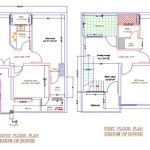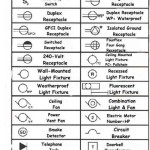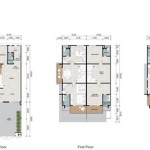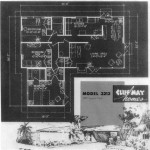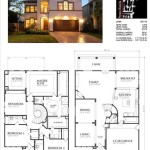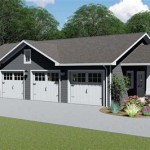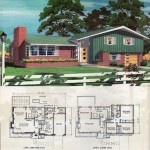Tiny House Home Plans in Oregon: A Guide to Design and Regulations
Oregon has emerged as a popular location for those seeking the simplicity and sustainability offered by tiny house living. The state’s progressive attitude towards alternative housing, coupled with its natural beauty, makes it an attractive option for individuals and families looking to downsize. This article will explore the landscape of tiny house home plans in Oregon, encompassing design considerations, regulatory frameworks, and practical advice for realizing a tiny house dream within the state.
The appeal of tiny houses extends beyond mere affordability. They offer a reduced environmental footprint, promote mindful consumption, and provide opportunities for greater financial freedom. In Oregon, where outdoor recreation and environmental consciousness are widespread values, tiny houses resonate deeply with many residents. However, navigating the planning and building process requires careful consideration of local ordinances and a well-defined construction plan.
Key Point 1: Understanding Oregon's Tiny House Regulations
Oregon's approach to tiny house regulations is nuanced and varies considerably by jurisdiction. While the state doesn't have a single, overarching set of rules governing all tiny houses, it has made progress in creating pathways for their acceptance. The key distinction lies between tiny houses on wheels (THOWs) and tiny houses on foundations (THOFs).
Tiny houses on wheels are generally classified as recreational vehicles (RVs) or park model RVs. As such, they are usually subject to RV-specific regulations, which may restrict their placement to designated RV parks or campgrounds. The length of stay may also be limited. However, some jurisdictions are beginning to recognize THOWs as a viable option for permanent living, and are developing specific zoning ordinances to accommodate them. It is crucial to research the specific regulations of the city and county where the tiny house is intended to be located. This includes understanding requirements for septic systems, water connections, electrical hookups, and setback distances from property lines.
Tiny houses on foundations, on the other hand, are typically treated as traditional dwellings and must comply with the Oregon Residential Specialty Code (ORSC). This code dictates requirements for building materials, structural integrity, fire safety, and accessibility. While the ORSC does not explicitly define a minimum size for a dwelling, local jurisdictions may have their own minimum square footage requirements. Therefore, before commissioning or purchasing tiny house home plans, it is essential to confirm that the design meets all applicable building codes and zoning regulations. Engaging with local planning departments early in the process is highly recommended to avoid potential setbacks or costly modifications later on.
Furthermore, some Oregon jurisdictions are embracing innovative approaches to tiny house development, such as allowing them as accessory dwelling units (ADUs) on existing residential properties. ADUs offer a legal and potentially lucrative option for homeowners to add a tiny house to their property, providing affordable housing options and generating rental income. However, ADU regulations also vary widely, so thorough research is necessary.
Securing the necessary permits for either a THOW or a THOF is another key consideration. The permitting process typically involves submitting detailed building plans, undergoing inspections, and demonstrating compliance with all relevant codes and regulations. Working with a qualified architect, designer, or builder who is familiar with Oregon’s building codes and local zoning ordinances can significantly streamline the permitting process and increase the likelihood of a successful outcome.
Key Point 2: Design Considerations for Oregon Tiny Houses
Designing a tiny house for Oregon requires careful consideration of the state’s unique climate and lifestyle. The Pacific Northwest experiences wet winters and relatively mild summers, which can influence the choice of building materials, insulation techniques, and heating systems.
Durability and weather resistance are paramount. Selecting materials that can withstand heavy rainfall and humidity is crucial for preventing moisture damage and ensuring the longevity of the structure. Metal roofing, cedar siding, and composite decking are popular choices for their ability to withstand the elements. Adequate insulation is also essential for maintaining a comfortable indoor temperature year-round and reducing energy consumption. Spray foam insulation, rigid foam insulation, and mineral wool are all effective options for insulating tiny houses, offering high R-values and moisture resistance.
Passive solar design principles can be incorporated to maximize natural light and minimize the need for artificial heating and cooling. Orienting the tiny house to take advantage of southern exposure can help to warm the interior during the winter months, while strategically placed overhangs and awnings can provide shade during the summer. Large windows and skylights can also enhance natural light and create a sense of spaciousness. However, it is important to balance the desire for natural light with the need for privacy and energy efficiency. Low-E glass can help to reduce heat transfer and glare, while strategically placed blinds or curtains can provide privacy and control light levels.
Interior design should focus on maximizing functionality and storage space. Multi-functional furniture, such as sofa beds, folding tables, and storage ottomans, can help to make the most of limited square footage. Vertical storage solutions, such as shelves, cabinets, and loft spaces, can also free up valuable floor space. A well-designed kitchen is essential for comfortable living in a tiny house. Compact appliances, such as induction cooktops, convection ovens, and drawer dishwashers, can save space and reduce energy consumption. A composting toilet can also conserve water and reduce reliance on septic systems.
In Oregon, where outdoor living is highly valued, incorporating outdoor spaces into the tiny house design can enhance the living experience. Decks, patios, and covered porches can provide additional living space for relaxing, dining, and entertaining. A small garden or greenhouse can also allow residents to grow their own food and connect with nature. When designing outdoor spaces, it is important to consider the local climate and topography. Providing shelter from rain and wind is essential for maximizing the usability of outdoor spaces throughout the year.
Key Point 3: Finding and Evaluating Tiny House Home Plans
Numerous sources offer tiny house home plans, ranging from free online resources to professionally designed blueprints. The key is to find plans that meet individual needs, comply with local building codes, and align with the desired aesthetic. Careful evaluation of the plans is crucial before making a purchase or commencing construction.
Free tiny house plans can be a useful starting point for exploring different design options and understanding the basic principles of tiny house construction. However, it is essential to recognize that free plans may not be complete or accurate and may not comply with local building codes. Therefore, it is crucial to thoroughly review and verify the information provided in free plans before using them for construction.
Professionally designed tiny house plans offer a higher level of accuracy and detail and are more likely to comply with building codes. These plans typically include detailed floor plans, elevations, sections, and construction details. They may also include specifications for materials and finishes, as well as instructions for building the structure. When purchasing professionally designed plans, it is important to choose a reputable designer or architect who is experienced in tiny house construction and familiar with Oregon’s building codes.
Before purchasing or using any tiny house plans, it is important to carefully evaluate them to ensure that they meet individual needs and comply with local regulations. This includes reviewing the floor plan to ensure that it provides adequate living space and storage. It also includes checking the dimensions of the structure to ensure that it meets any size restrictions imposed by local zoning ordinances. Furthermore, it is essential to verify that the plans comply with the Oregon Residential Specialty Code (ORSC) or relevant RV standards, depending on whether the tiny house is on a foundation or on wheels.
It is also advisable to consult with a local building inspector or code official to review the plans and obtain feedback before commencing construction. They can identify any potential issues or concerns and provide guidance on how to ensure compliance with local regulations. Engaging with building professionals early in the process can save time and money in the long run by preventing costly mistakes and delays.
Finally, considering energy efficiency and sustainability is important when evaluating tiny house plans. Look for plans that incorporate passive solar design principles, high-performance insulation, and energy-efficient appliances. Choose sustainable building materials, such as reclaimed wood, bamboo flooring, and low-VOC paints. By prioritizing energy efficiency and sustainability, tiny house owners can reduce their environmental footprint and save money on utility bills.

Oregon Cottage Company Tiny Homes

Oregon Cottage Company Tiny Homes

Oregon Cottage Company Tiny Homes

10 X 20 Tiny Home Designs Floorplans Costs And Inspiration The Life

12 X Tiny Home Designs Floorplans Costs And More The Life

12 X 28 Tiny Home Designs Floorplans Costs And More The Life
The Acadia Home Plan Oregon Idaho

12 X 32 Tiny Home Designs Floorplans Costs And More The Life

Fabulous Tiny Home In Oregon Reveals Game Changing Design S Autoevolution

12 X 24 Tiny Home Designs Floorplans Costs And More The Life

